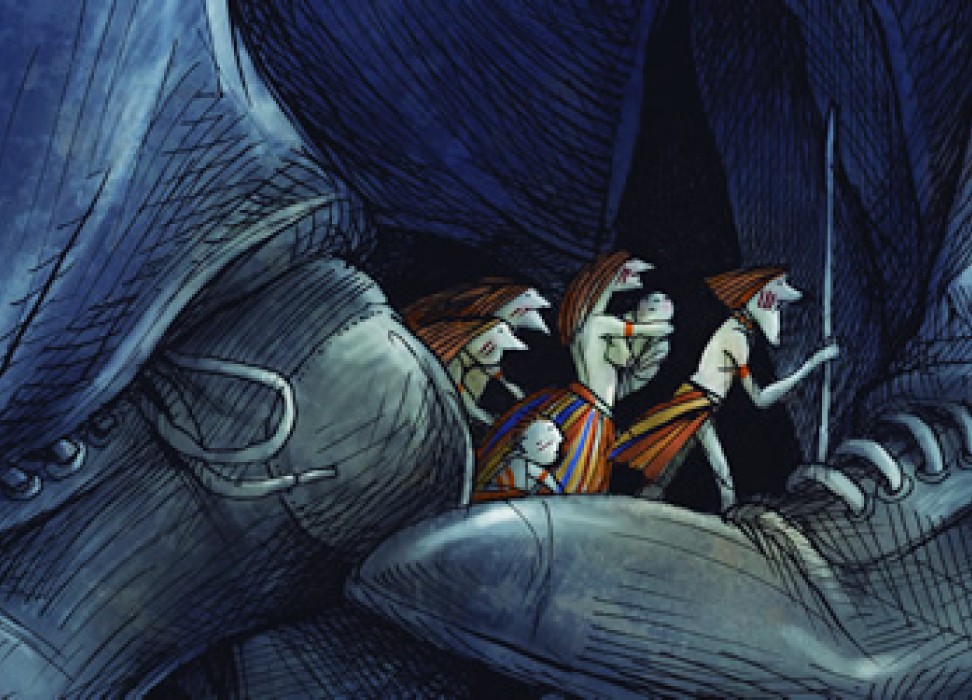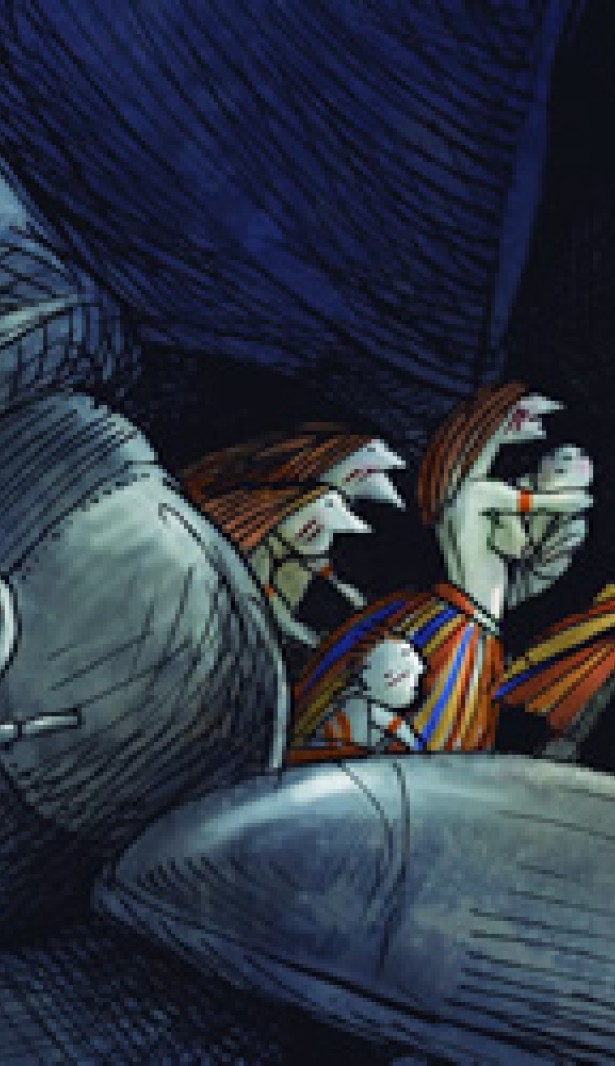Cartoonists for minorities
12 December 2016

Can images be a force for good? This was essentially the question posited by a group of world renowned political cartoonists who are part of a project “Promoting and protecting rights of minorities through visual arts” developed by the UN Human Rights Office, the Canton of Geneva and the City of Geneva..
Cartoonists Patrick Chappatte, more commonly known by his family name, Angel Boligan Corbo and Godfrey Mwampembwa, known as Gado, exchanged views during a panel discussion on the side-lines of the UN Forum on Minority Issues in November in Geneva.
All four are members of the Cartooning for Peace project established 10 years ago in Paris by former UN Secretary General Koffi Annan, which now counts 150 artists as its members. The City of Geneva and the Geneva Foundation created a biannual Cartooning for Peace Prize to recognize the efforts of politically engaged cartoonists from across the globe.
Chappatte, who was moderating the debate, recalled that throughout centuries, images have been used negatively as tools for propaganda, and have proven to be very efficient means of communication. However, he stressed, the role of political cartoonists has evolved.
“We are first and foremost commentators of the news. We have a role of criticism, which is a positive role. In any society, any regime, any system, voices that help the powers that be understand what is going on and understand voices of dissent are important.”
The winner of the 2016 Cartooning for Peace Prize, Tanzanian artist Gado, who was recently dismissed from his post at a newspaper based on the publication of his cartoons against corruption and various forms of discrimination in his region of East Africa, called for the protection of diversity.
“I’ve spoken against discrimination based on ethnicity, language and religious beliefs. I’ve always believed there is strength in diversity and that we should protect it,” Gado said. “As a people, it is in diversity that we develop, that we go forward economically, politically and socially. Each of us can do their bit and speak against discrimination in our own communities, in our own work.”
Cuban cartoonist Boligan has been living in Mexico and working for local newspaper El Universal where he has an opinion space that uses a common formula: drawing, thought and humour.
“Cartooning is a language without borders; our drawings can reach the whole planet in minutes because of today’s online social networks. We as cartoonists are minorities; there is one cartoonist per every million of inhabitants, but we have our pens and we have our access to the paper press and electronic media; that gives us power for good,” he said.
“In Mexico, we see ourselves as those who take revenge for the people who do not have access to a pen, a computer, or social media, to criticize.”
Hani Abbas, a Palestinian refugee who grew up in Yarmouk Refugee Camp south of Damascus, Syria, believes that he has carried a responsibility and even an accusation since birth.
“I don’t really know where this accusation comes from - I am supposed to be the victim - but because I was a Palestinian refugee I was faced with prejudice. In countries where there are racial tensions one is treated as a suspect,” said the 2014 winner of the Cartooning for Peace Prize.
“Since the beginning all my drawings have been on the Palestinian question. What makes you go on with your work and your life is the will to defend your religious and ethnic identity in the face of those who have turned you into a refugee,” Abbas added. “Although you are not to blame for the tensions, you are faced with prejudice and you always have to defend yourself.”
Since he was 17 years old, Abbas’ motivation has been to express the pain of the Palestinian people through his cartoons. He believes that situations such as the 2003 war in Iraq bring out sectarian reactions in people and all ethnicities pay a price.
“All people are the same in dignity and rights and it’s a shame, in the 21st century, to have to speak about majorities oppressing minorities. However, it is a fact that we must address to find a suitable solution, one of which being not to favour anyone against the other,” Abbas said.
All four cartoonists were commissioned to develop cartoons for the anti-discrimination and protection of minorities project that were unveiled at the meeting.
“Their simple lines emotionally connect us in a moment of empathy for fellow humans and push us to go forward in the fight for justice,” said Mona Rishmawi, Chief of the Rule of Law, Equality and Non-Discrimination Branch at the UN Human Rights Office, describing the drawings.
“An image can communicate in a glance what a report tries to express over many pages. The artists with us today show the resilience of artists and their determination to keep the human conscience alive,” she added.
12 December 2016
